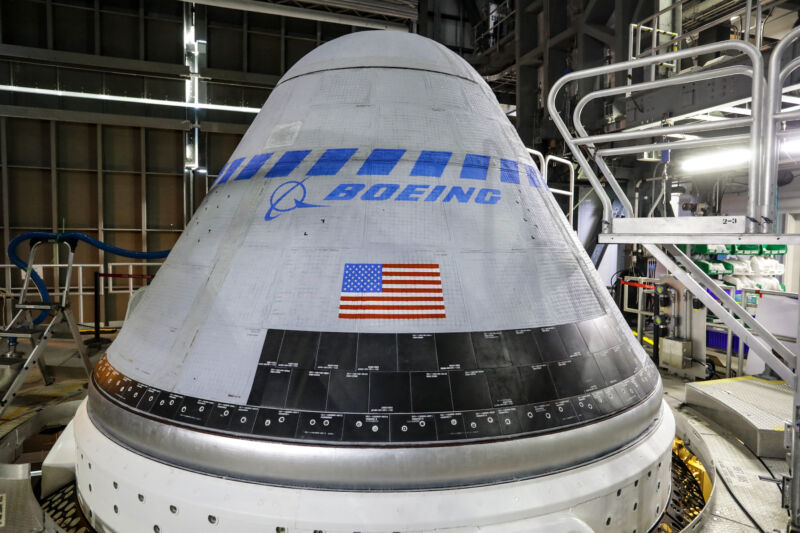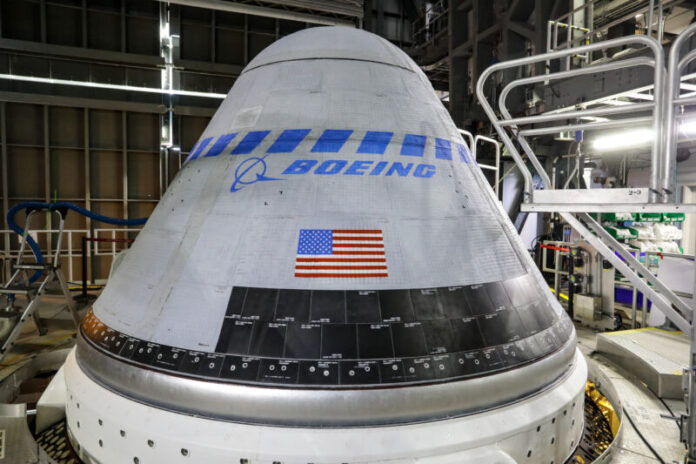
Enlarge / A Starliner spacecraft mounted on top of an Atlas V rocket before an unpiloted test flight in 2022. (credit: Boeing)
Ten years ago next month NASA announced that Boeing, one of the agency's most experienced contractors, won the lion's share of government money available to end the agency's sole reliance on Russia to ferry its astronauts to and from low-Earth orbit.
At the time, Boeing won $4.2 billion from NASA to complete development of the Starliner spacecraft and fly a minimum of two, and potentially up to six, operational crew flights to rotate crews between Earth and the International Space Station (ISS). SpaceX won a $2.6 billion contract for essentially the same scope of work.
A decade later the Starliner program finds itself at a crossroads after Boeing learned it will not complete the spacecraft's first Crew Flight Test with astronauts onboard. NASA formally decided Saturday that Butch Wilmore and Suni Williams, who launched on the Starliner capsule June 5, will instead return to Earth inside a SpaceX Crew Dragon spacecraft. Put simply, NASA isn't confident enough in Boeing's spacecraft after it suffered multiple thrusters failures and helium leaks on the way to the ISS.
Read 38 remaining paragraphs | Comments
Ars Technica - All contentContinue reading/original-link]




